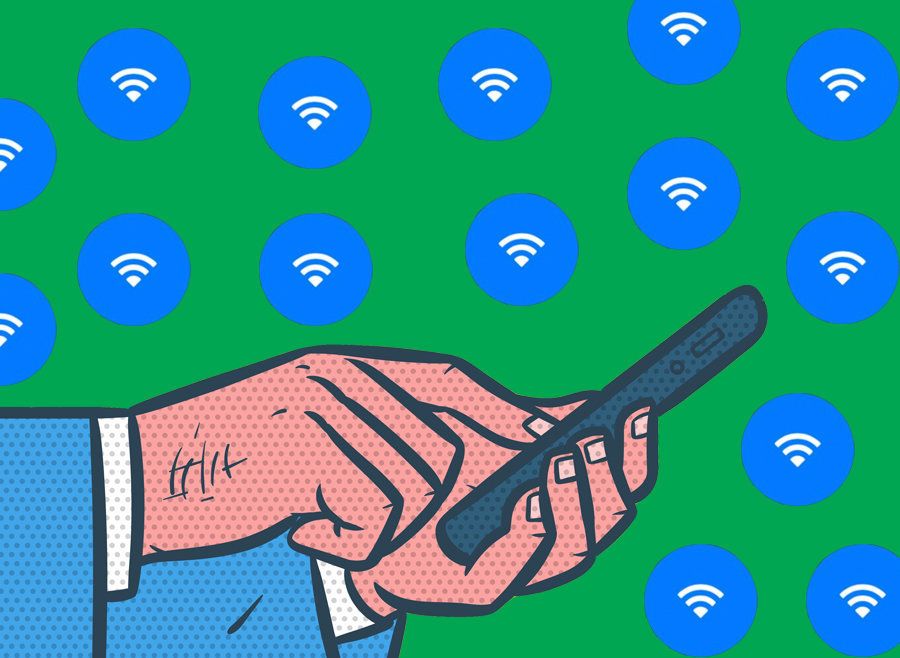On Tuesday 19 March, Sophie Meehan was heading home from a night out in London with her dad, Patrick. The pair had been to see the musical Hamilton – catching a tube to St Pancras after the show finished, to wait for the 11pm fast train back home to Canterbury.
It was as they were coming up the escalator from the underground on to the main station concourse that Meehan’s phone first buzzed. The 20-year-old opened it to find an explicit, and very graphic, image of a vagina, which she’d been sent via AirDrop. She scanned the surrounding area trying to work out who was responsible – AirDrop, which she’d left switched on – works in a 30 foot radius. The only people near by were a young man, a middle-aged woman and another, older man. Unsure who to blame, Meehan deleted the request and didn’t mention it to her dad.
Less than a minute later, while her dad was using the station toilets, another request arrived. This time the image was of an erect penis. This behaviour, known as cyber flashing, is not uncommon: HuffPost UK has spoken to more than 70 women about their experiences of being sent digital, unsolicited sexual images.
But in Meehan’s case, the perpetrator didn’t restrict himself to the digital sphere – instead he now approached Meehan in the station, standing a metre away as he repeatedly sent the image.

“He made eye contact with me. I looked at his hands and they were shaking; his thumbs hovered over his phone waiting for my reaction,” Meehan explains. She moved closer towards the toilets, hoping her dad – an ex-police officer – would return quickly. “The man was so close to me. It was so intimidating.”
To avoid looking alone, she called her mum, her voice was breaking with nerves. “It was terrifying. I could feel my phone vibrating against my ear as he sent me more images.”
Eventually, after several minutes, her dad emerged from the bathroom. The man – who had not spoken to her but just moved closer and closer – walked away. Meehan stopped her dad confronting him for fear she had the wrong person and it would cause a scene.
But as the pair went to board their train, Meehan glanced over her shoulder and saw the same man had followed them, and was now watching her get on the train. “I saw him across the concourse, staring right at me. It was just so horrible.”
She worries about what would have happened had her dad not returned from the loo. “Although it was in a public space, I felt very alone and vulnerable. Because it’s not like flashing where everyone can see if it happens to you in public, and might intervene or try to help. It was more internalised – no one knew what was on my phone. I was singled out, I was being targeted, and it felt very personal.”
This experience, where offline and online behaviour are so explicitly linked, is different from that of other women who have spoken to HuffPost UK about cyber flashing. Experts have previously said it’s the anonymity of AirDrop that makes it such an attractive crime to lots of people. Dr Stephen Blumenthal, a clinical psychologist at the Portman Clinic in London, says it’s the facelessness of AirDrop that has given some clients the opportunity to act out their fantasies.
Meehan’s experience, however, suggests that for some perpetrators, the lines between digital and face-to-face harassment are more blurred. Professor Clare McGlynn, a professor of law and expert in image-based sexual abuse at Durham University, says: “This perpetrator exemplifies this inter-relationship between different forms of offending. He is just using technology as another means of offending.”
“The same factors that make us worry about physical flashing should make us worry about online cyber flashing."”
There isn’t extensive research in this area – partly because cyber flashing is a new crime and women are reluctant to report it, though statistics suggest as many as four in 10 millennial women have received sexual images they didn’t request. But the broad range of factors which lead to people committing sexual offences apply offline and online without distinction, argues McGlynn.
“The same factors that make us worry about physical flashing should make us worry about online cyber flashing,” she says. “It is important to understand sexual offending on a continuum – all forms including flashing, rape and others, are all related and therefore their causes and harms are related.”
In England and Wales, however, the law still makes a distinction between online flashing and its in-person equivalent, which is an offence punishable under the Sexual Offences Act. Cyber flashing victims are still waiting to see action after a cross-party group of MPs called for a new law in 2018.
In June the government annouced a Law Commission review would look into whether current laws are suitable or a new law is needed against cyber flashing in England and Wales. The review will begin on 1 July 2019 and run till 2021.

Meehan, who ostensibly experienced such harrassment online, says she dreads to think about what might have happened had she been alone and without the protection of her dad close by. “If I was on my own I would have been a lot more scared and don’t think I’d have known what to do.
She worries that the man might have followed her on to the train and she would have been powerless to act. “I probably would have tried to find station security, or the BTP [British Transport Police] maybe.” As it was, she didn’t report the cyber flashing – because it wasn’t a crime, she didn’t think it was worth the effort.
“As a young woman who travels up and down the country alone quite often, the idea that this, or something worse, might happen to me next time is scary,” she says. “It’s a lot more personal than a cat call in the street – it’s about you.”
